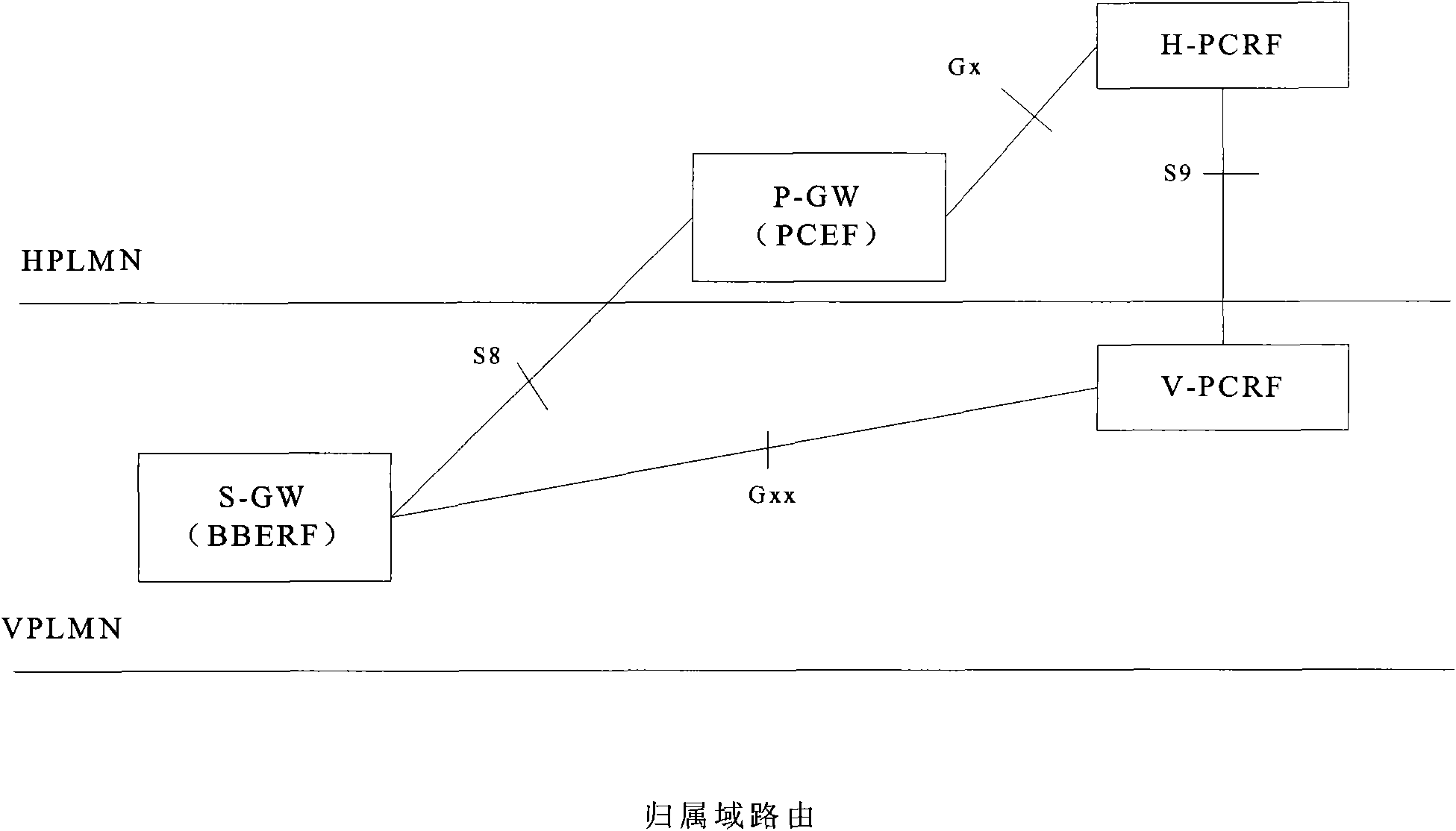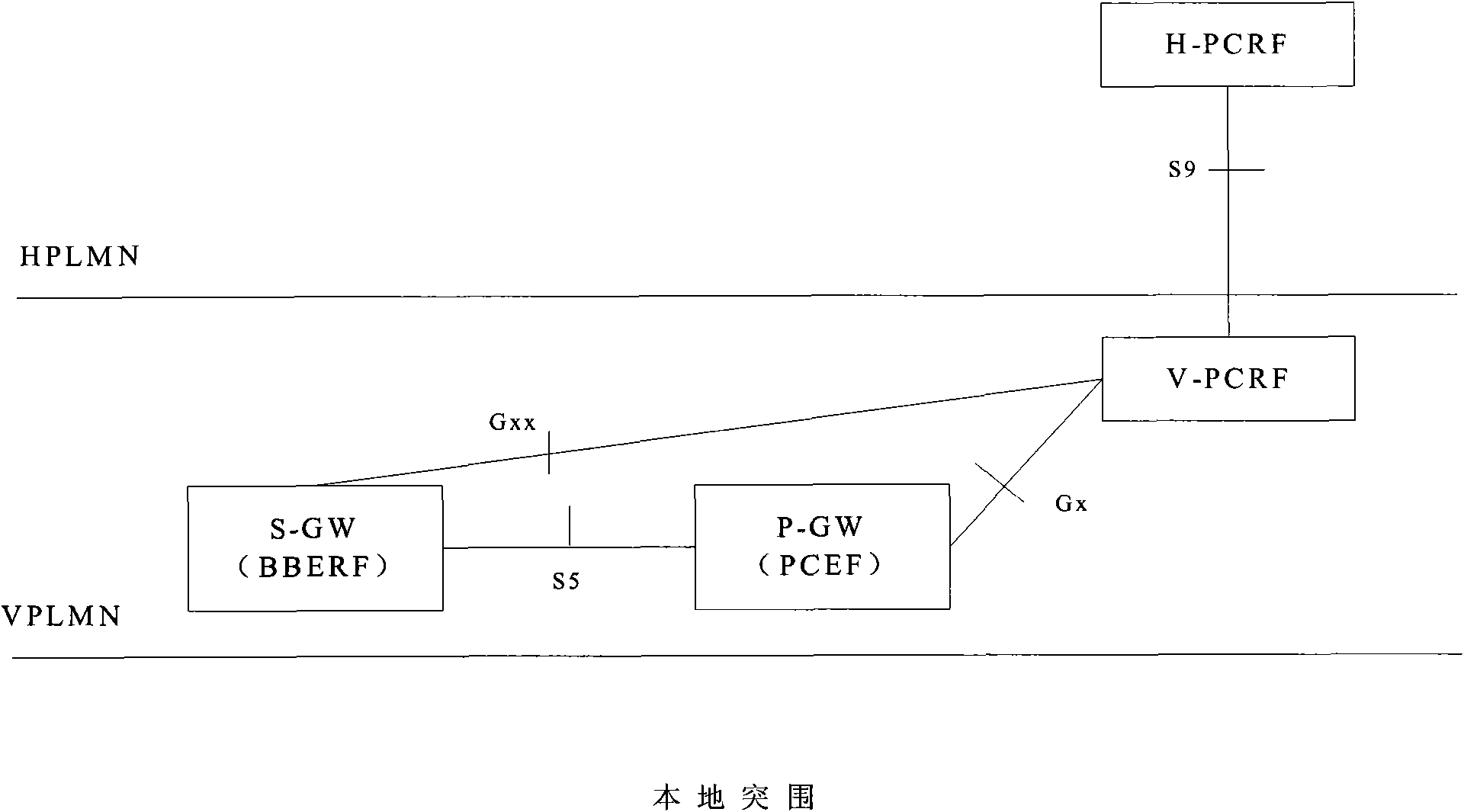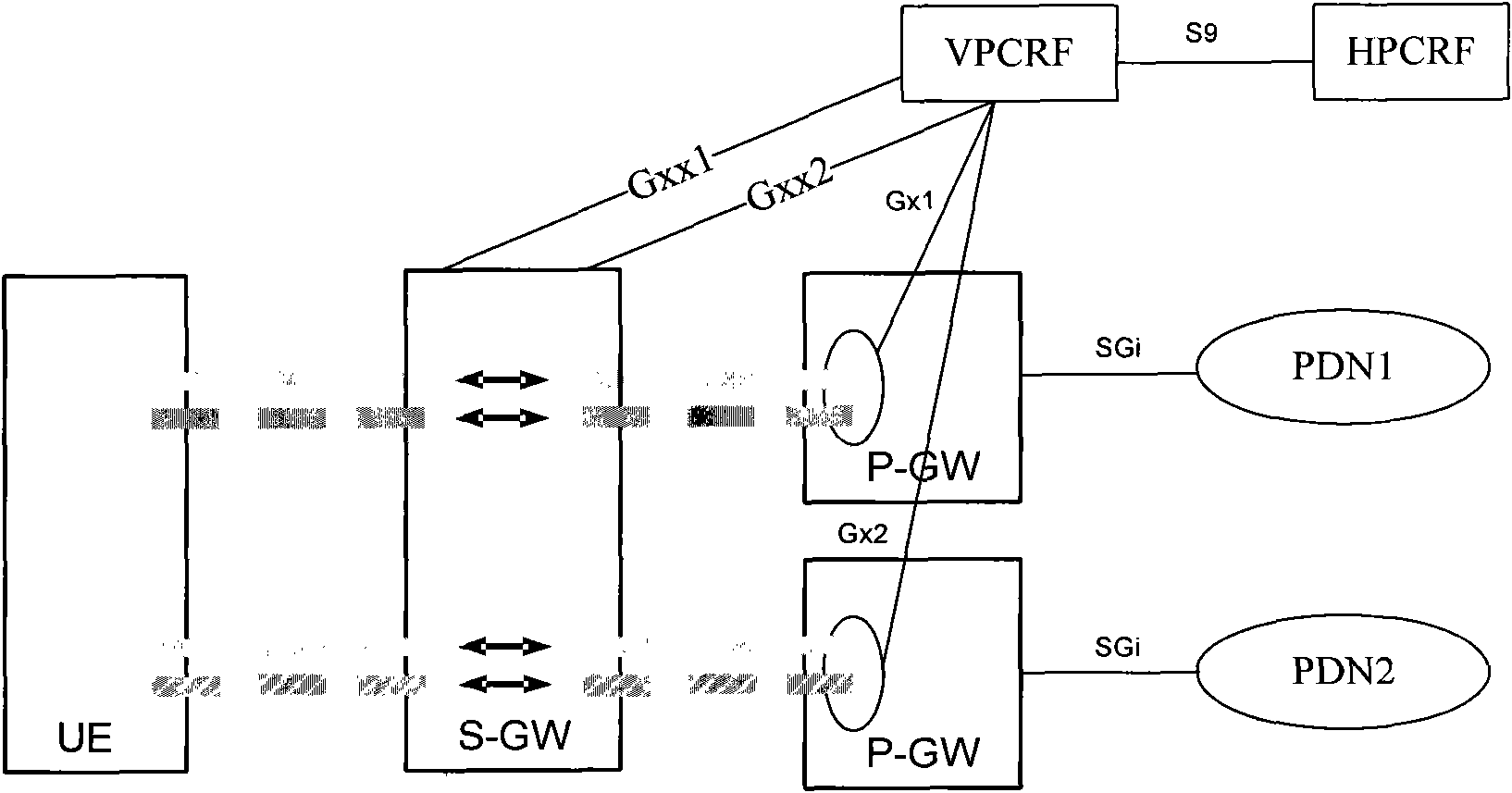Method and system for implementing strategy and charge control under scene of multi-grouping data network
A packet data network and charging control technology, applied in the field of communication, can solve the problem that the S9 session cannot distinguish and handle the establishment, modification and deletion of IP-CAN and gateway control sessions, and achieves the effect of avoiding invalid resource occupation.
- Summary
- Abstract
- Description
- Claims
- Application Information
AI Technical Summary
Problems solved by technology
Method used
Image
Examples
Embodiment 1
[0081] Such as Figure 4 As shown, the 3GPP access P-GW is located in the visiting domain roaming scenario, S8 adopts PMIP protocol, BBERF is located in S-GW, PCEF is located in P-GW, the S9 session between VPCRF and HPCRF has been established, and the user initiates the second PDN of establishment. The HPCRF sends the PCC rule to the VPCRF through the S9 session, and the message contains the PDN information. After receiving it, the VPCRF sends the PCC rule to the PCEF (P-GW), and extracts the Qos rule from the PCC rule and sends it to the BBERF (S-GW). Specifically include the following steps:
[0082] 1. The user has established the gateway control session, IP-CAN session and S9 session corresponding to PDN1.
[0083]2. The user initiates the connection establishment of PDN2, first triggers the BBERF (SGW) to initiate the establishment of the gateway control session, and after the VPCRF receives the establishment message of the gateway control session, it judges that the ...
Embodiment 2
[0113] Such as Figure 5 As shown, it is a trusted non-3GPP access CMIP roaming scenario, the DSMIP protocol is used between the UE and the P-GW, the BBERF is located in the A-GW (A-GW is located in the visited location), and the PCEF is located in the P-GW (the P-GW is located in the home domain), the S9 session between the VPCRF and the HPCRF has been established, and the user initiates the establishment of the second PDN. The HPCRF sends the PCC rule to the VPCRF through the S9 session, and the message contains the PDN information. After receiving it, the VPCRF sends the PCC rule to the PCEF (P-GW). The HPCRF sends the QoS rule to the BBERF through the S9 session, which carries tunnel information (the prior art), and the BBERF distinguishes the PDN corresponding to the QoS rule according to the tunnel information. Specifically include the following steps:
[0114] 1. The user has established the IP-CAN session, gateway control session and S9 session corresponding to PDN1...
Embodiment 3
[0121] Such as Figure 6 As shown, it is 3GPP access, the P-GW of the second PDN connection is located in the home domain roaming scenario, S8 adopts the PMIP protocol, BBERF is located in the S-GW, PCEF is located in the P-GW, and the S9 session between VPCRF and HPCRF has been established , the user initiates the establishment of the second PDN. The HPCRF sends the QoS rules to the VPCRF through the S9 session, and the message contains the PDN information. VPCRF sends the QoS rule to BBERF (S-GW) after receiving it.
[0122] Specifically include the following steps:
[0123] 1. The user has established the gateway control session, IP-CAN session and S9 session corresponding to PDN1.
[0124] 2. The user initiates the establishment of the PDN2 connection, and first triggers the BBERF (SGW) to initiate the establishment of the gateway control session.
[0125] 3. After receiving the establishment message of the gateway control session, the VPCRF judges that the PDN is conn...
PUM
 Login to View More
Login to View More Abstract
Description
Claims
Application Information
 Login to View More
Login to View More - R&D
- Intellectual Property
- Life Sciences
- Materials
- Tech Scout
- Unparalleled Data Quality
- Higher Quality Content
- 60% Fewer Hallucinations
Browse by: Latest US Patents, China's latest patents, Technical Efficacy Thesaurus, Application Domain, Technology Topic, Popular Technical Reports.
© 2025 PatSnap. All rights reserved.Legal|Privacy policy|Modern Slavery Act Transparency Statement|Sitemap|About US| Contact US: help@patsnap.com



